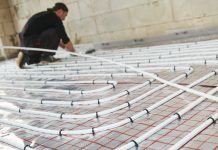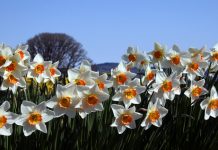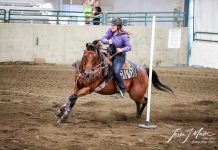Ask Anacortes residents what makes their community unique and you’ll hear different responses. Some people will vote for quirky town personalities, others will point to events with a decidedly zany streak. Some will discuss the town’s fishing and lumber milling roots. It’s a sure thing, however, that Bill Mitchell’s murals will get plenty of votes for lending character to Anacortes.
A town treasure who has passed away, Bill painted more than 150 near-life size likenesses of residents despite being partially paralyzed in a car crash on Whidbey Island in his 20s. Visit the Anacortes murals, and don’t panic at the sheer number of them, you’ll see many on a 12-block stroll around Old Town.
Here’s a suggested path and some background.
Start at the Marina
With ample parking, the north corner of the Cap Santé Marina at 9th and R is a good place to start. At the waterside, meet the Divine Divas of the Deep—mermaids decked out in formal wear for Fourth of July parades. These salty women, just the kind of characters Bill appreciated, were inspired by a women’s empowerment movement that suggests every gal should be able to dress up and be in a parade. “We felt free to be as outrageous as we pleased,” one of them relates, “since we couldn’t be recognized.”
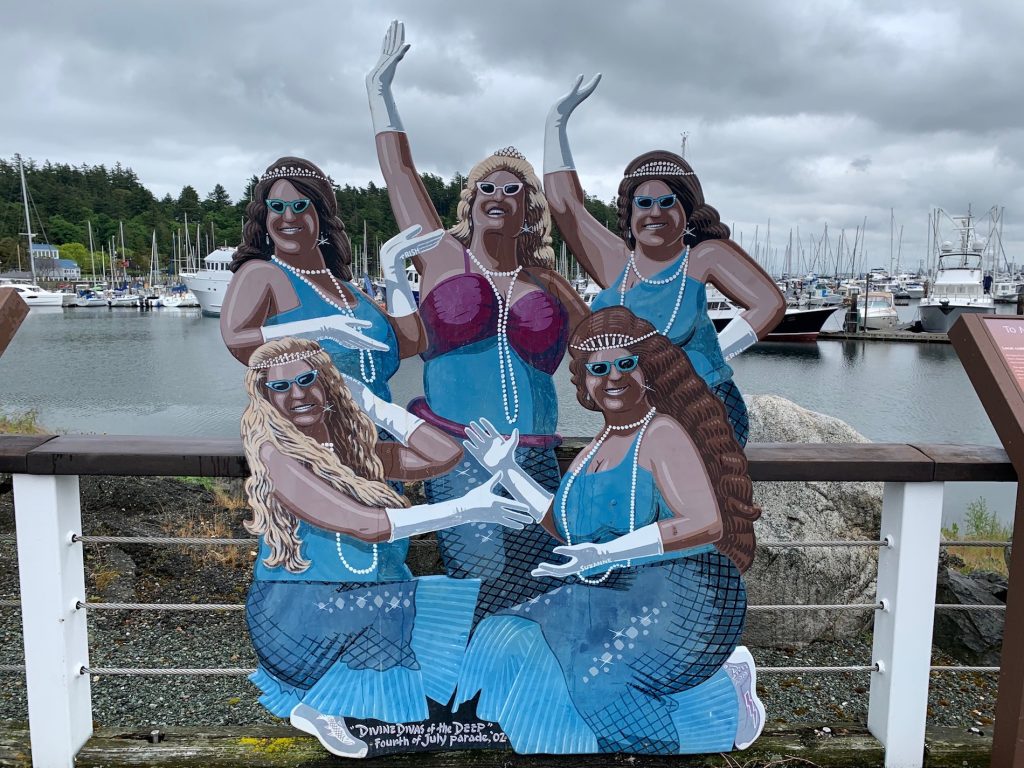
West to the Visitor’s Center
From the marina, walk west to Commercial Avenue, stop by the Visitor’s Center and pick up a mural map. Near the door is Jennie LeMaister’s portrait. After going missing for years and being misidentified as a man, great niece Jessi Rose says the likeness is now in a good spot. The 1938 Salmon Derby winner “loved to fish,” a neighbor remembers.
Don’t miss Bobo the baby gorilla on the front of the building in his red overalls. In what probably seemed like a good idea at the time, cannery owner Bill Lowman purchased Bobo from an African hunter and brought him to Anacortes 70 years ago. The Lowmans raised Bobo at home until he reached almost two years old, then they sold him to a Seattle zoo. You’ll find more images of Bobo around town if you know where to look.
Next door, meet “Wild Bill” Bessner, Bill Mitchell’s grandfather, on his Indian motorcycle. Bill painted brief stories around the margins of some of the figures; this is one. You’ll gather that “Wild Bill” was on a rampage. “Cops lookin’ for me for a week!” he says.
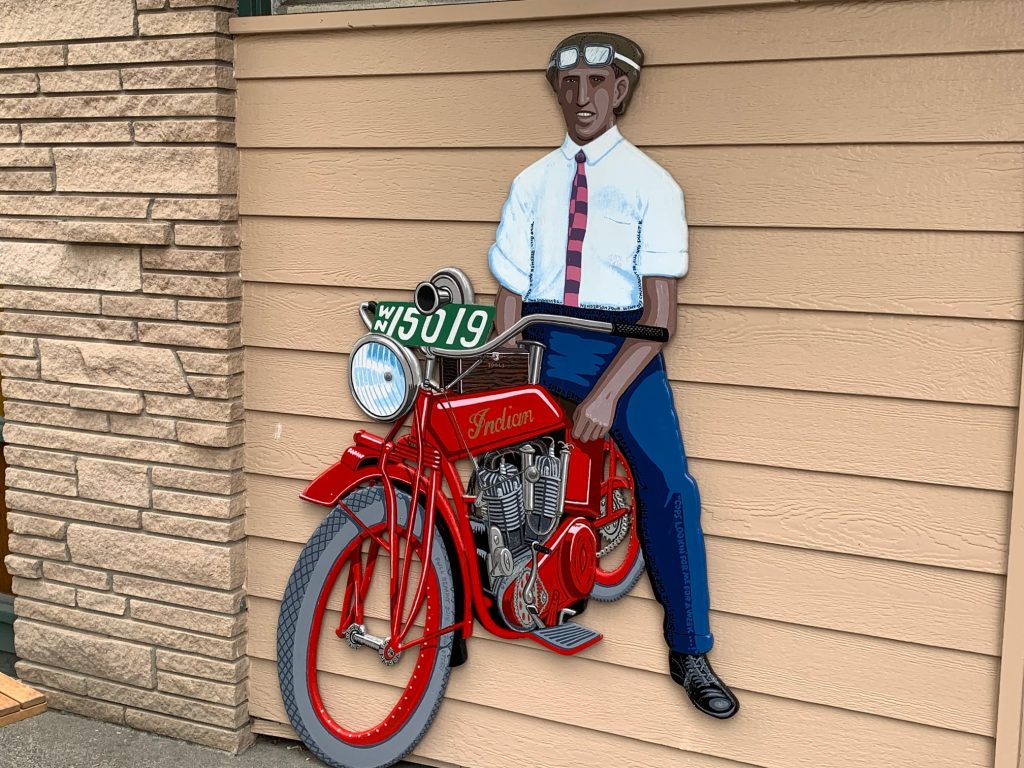
A Quick Detour
Continuing north on Commercial, turn right on 8th for a one-block detour. Pass some friends in a 1912 auto and wave to April and her anchor on the side of a building that once housed Marine Town, a hardware store that eventually relocated to Florida.
Turn left on Q Avenue and greet Harley Sutt, who owned Rocket Sanitation before selling it to the city in 1970. Harley loved to race cars. “I heard he drove through burning buildings,” granddaughter Debbie Nickerson says. Another character on the Eagles building on Q is Rudy Malland, the self-taught “Banjo King of the Northwest.” Beverly Malland, Rudy’s daughter, says her dad wore out six banjos playing from Alaska to Montana, making people smile with “happy, toe-tapping singalong music” over several decades.
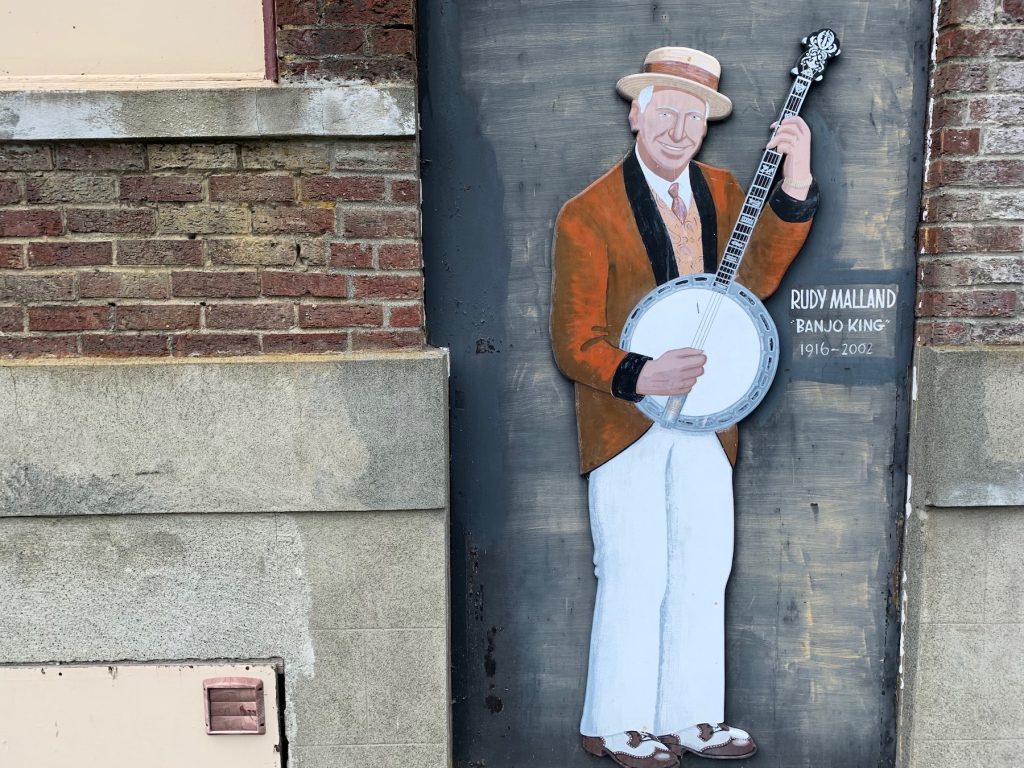
Back on Commercial
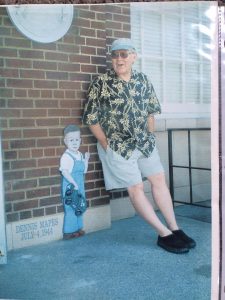
Turn left on 7th Street, nod to more local figures, then turn right on Commercial. After spotting the first town car crash (1913) on 6th, across at the post office meet much-loved toddler Dennis Mapes, Debbie Nickerson’s brother who passed away three years ago. “He was the best brother,” Debbie says. “He graduated from high school in Anacortes in 1960.”
Pint-sized resident Willy Evans loves the likeness of Dennis too. “He wants their picture taken each time we visit the post office,” his mom Marti says.
Down to the Port
Continue past the Anacortes Stage and Taxi mural at 5th and furniture guy “Hamie” Young at 4th, and walk to the port at the foot of Commercial. There you’ll see portraits of fisher folk, port managers and a lone basketball player from Anacortes High. Then turn south and up the west side of Commercial.
At 2nd Street, there’s Efthemios “Mike” Demopoulos’s 1918 Anacortes Junk Company truck. Born in Greece, Mike came to Anacortes and discovered construction leftovers near the port. The company he started with those discards thrives today as Marine Supply and Hardware, home of the mural.
The same building hosts Bill Mitchell’s first work: Fred White and his safety bike, painted in 1984.
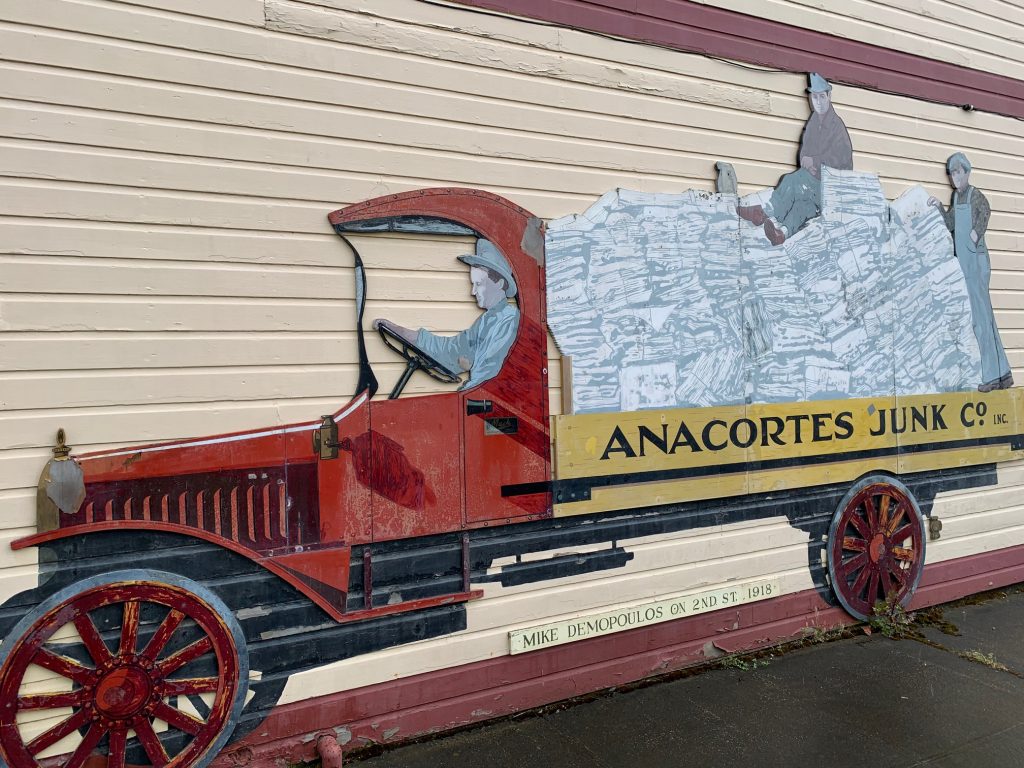
Back up to the Marina
Duck onto 3rd and 4th Streets as you walk south to see more of Bill’s murals, including another of grandfather “Wild Bill” in his Model T car on 3rd. On 5th, read the story of Larry Kelly, opium smuggler, and the genius plot to capture him. Next to Larry is Seid Chee, a Lowman cannery supervisor, and his family, alongside a bodyguard who protected them from Chinese gangs.
Across 5th Street are Bill’s Swiss great-grandparents, the Schwarzes. Eliza was one of the first female photographers in the area. Close by on 5th and Commercial is a favorite pair. The likeness of Fred Cartwright, once the manager at People’s Bank, was commissioned by his family, as many murals were. “I’ve had several people tell me that he helped them secure a loan to buy their home or start a business with a handshake and a belief in them,” granddaughter Vicki Mitchell relates. She points out one of her grandmother’s Cecile Brunner roses in his lapel. Nearby is Ellsworth (Ole) Olson, the bank’s assistant manager. “You see what kind of guy he was,” daughter Kaaren Malson says, “shoveling snow in a suit.”
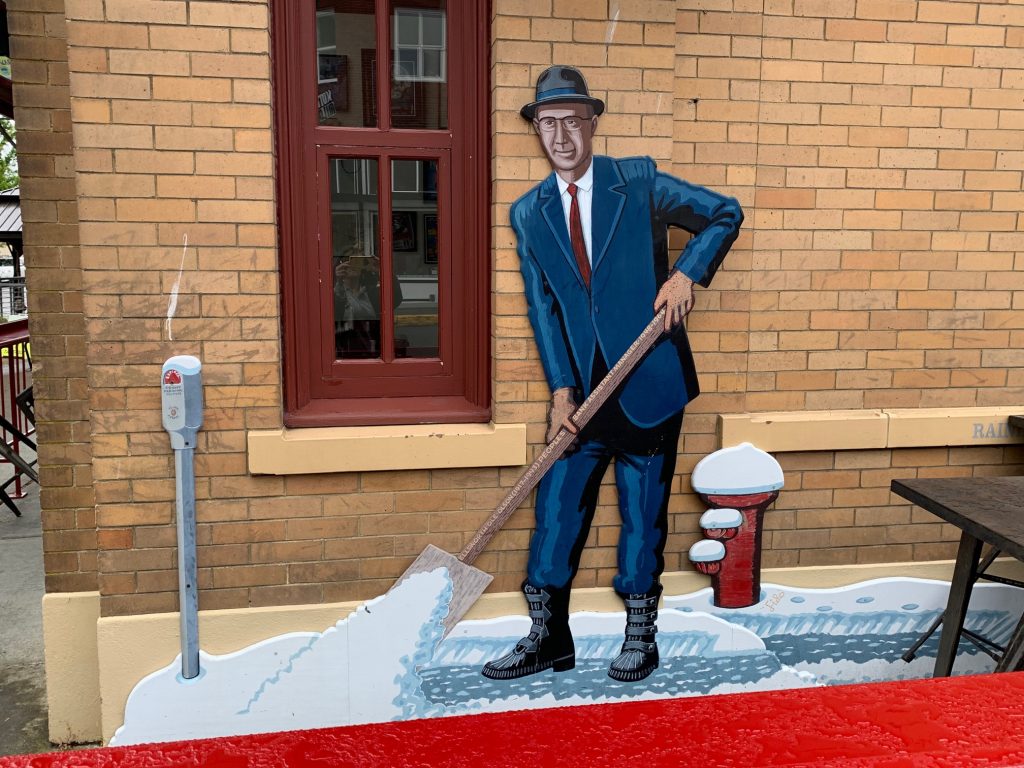
Continue south and pass more characters. To the right on 7th Street a parade of figures includes war veterans, a priest and musicians. Cliff Kelly played his bass fiddle for the Anacortes and Everett Elks, his daughter Maureen remembers. Walk up to 10th and discover Bill Mitchell’s little Aunt Yvonne in her 1929 red pedal car.
Head back to the marina and retrieve your car. If you’re disappointed you missed meeting Bill, drive to an alley on O Avenue between 5th and 6th to see him in the electric cart he piloted around town. Then watch a documentary on Bill and his murals by Corin Noronha of the Anacortes Museum—learn more and donate if you wish at the museum’s website.
Whether you’ve come to think Anacortes’s eccentric nature stems from its colorful characters, kooky events or rich history, you now know that Bill Mitchell captured it all.



